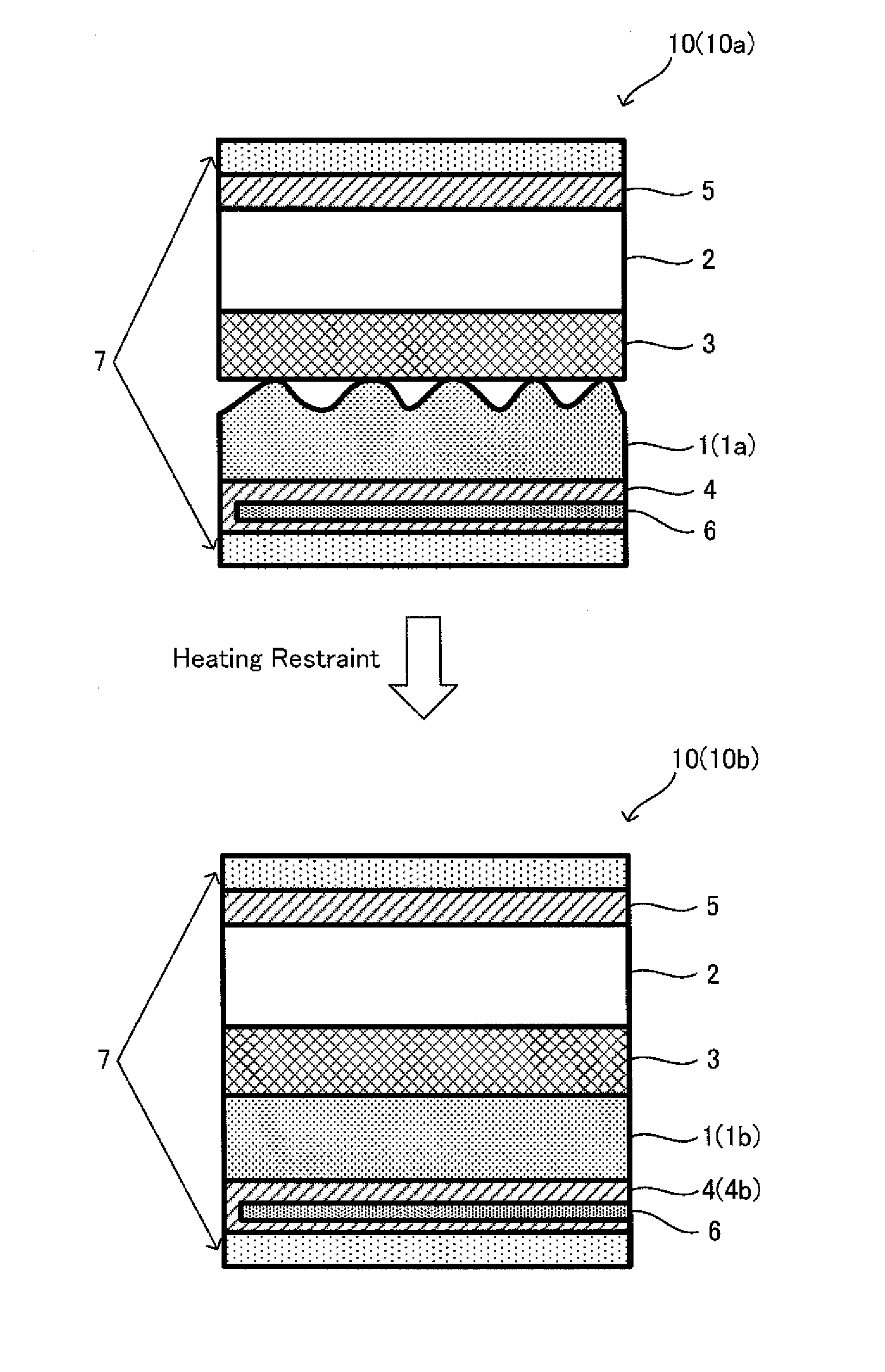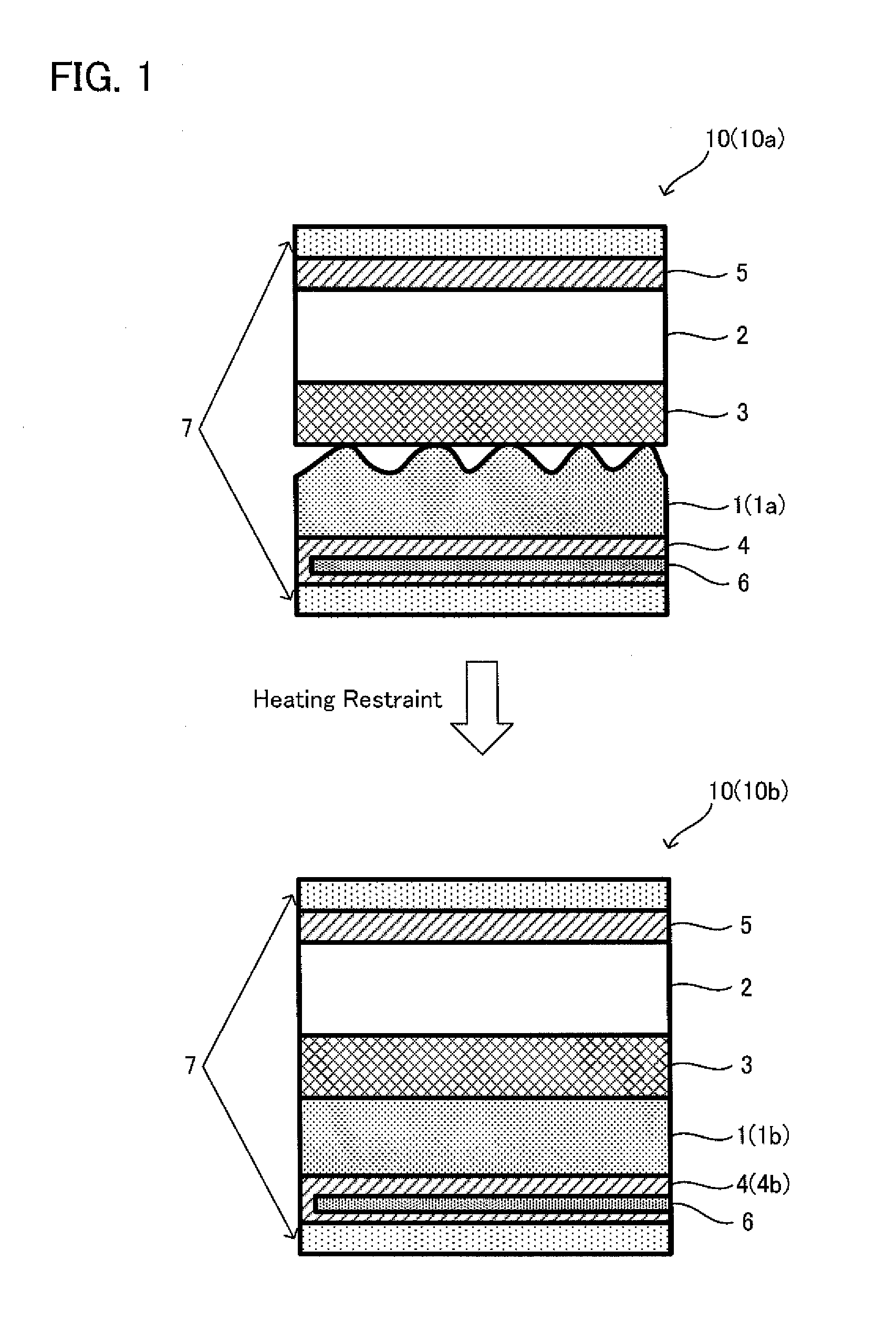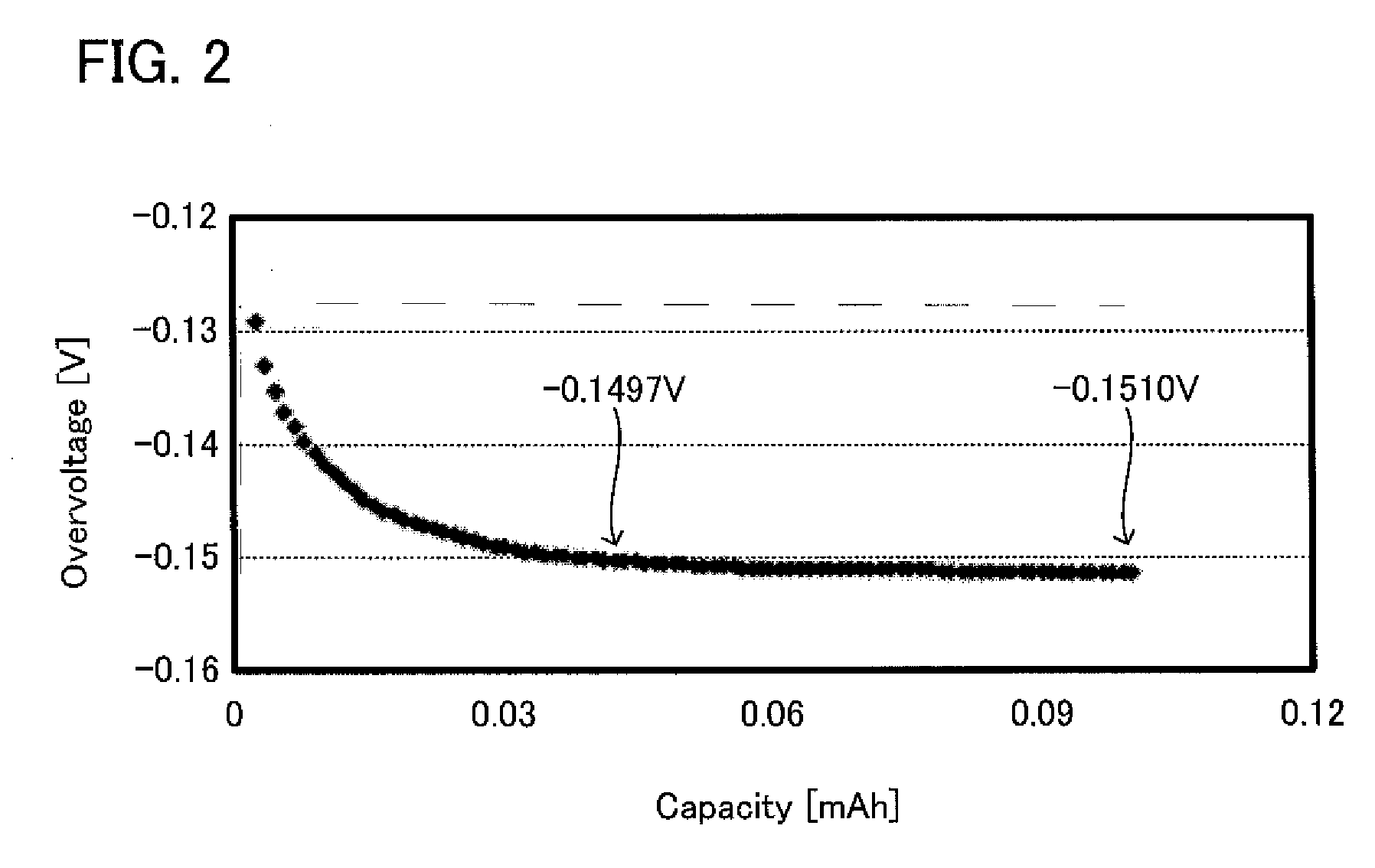Solid battery and method for regenerating the same
a solid battery and regenerative technology, applied in the field of solid batteries, can solve the problems of flammability of electrolytic solutions, achieve the effects of increasing the contact area, increasing the interface resistance, and increasing the overvoltag
- Summary
- Abstract
- Description
- Claims
- Application Information
AI Technical Summary
Benefits of technology
Problems solved by technology
Method used
Image
Examples
examples
[0052]A solid battery 10 using a lithium foil as an anode 1 was charged for a certain period of time, and thereafter was regenerated by the method of the present invention. A heat generating device which generates heat by being applied with an electric current was used as a heating device 6. An anode 1a was heated to 160° C. by the heating device 6 to be softened. Then, a compressive pressure of 0.005 MPa was applied to the softening anode 1a for 30 seconds by using a fastening device 7, to thereby regenerate a solid battery 10a to a solid battery 10b. The charge curves of the solid battery 10a and the solid battery 10b are shown in FIG. 3. The vertical axis of FIG. 3 represents the overvoltage [V], and the horizontal axis of FIG. 3 represents the capacity [mAh].
[0053]As shown in FIG. 3, the overvoltage in the plateau region of the solid battery 10a before regenerated by the method of the present invention was −0.1510 V. However, the overvoltage in the plateau region of the solid ba...
PUM
| Property | Measurement | Unit |
|---|---|---|
| temperature | aaaaa | aaaaa |
| temperature | aaaaa | aaaaa |
| melting point | aaaaa | aaaaa |
Abstract
Description
Claims
Application Information
 Login to View More
Login to View More - R&D
- Intellectual Property
- Life Sciences
- Materials
- Tech Scout
- Unparalleled Data Quality
- Higher Quality Content
- 60% Fewer Hallucinations
Browse by: Latest US Patents, China's latest patents, Technical Efficacy Thesaurus, Application Domain, Technology Topic, Popular Technical Reports.
© 2025 PatSnap. All rights reserved.Legal|Privacy policy|Modern Slavery Act Transparency Statement|Sitemap|About US| Contact US: help@patsnap.com



